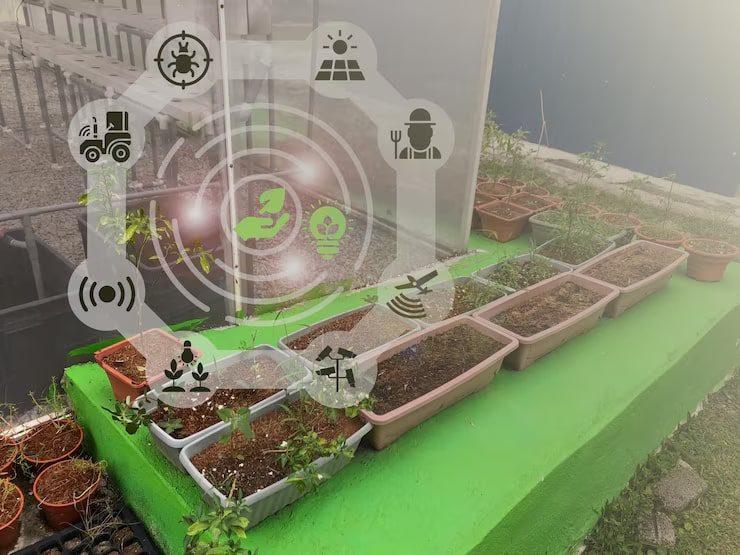Our planet is facing unprecedented challenges. Climate change, pollution, and resource depletion threaten our environment and our future. Fortunately, technology is stepping up to the plate, offering innovative solutions. Enter IoT-based environmental monitoring, a powerful tool for understanding our environment and fostering a more sustainable future.
What is IoT-based Environmental Monitoring?
Imagine a network of interconnected devices – sensors, cameras, and more – collecting real-time data on various environmental parameters. This is the essence of IoT-based environmental monitoring. These devices, embedded in everything from weather stations to soil sensors, gather crucial information on:
- Air quality (pollution levels, greenhouse gasses)
- Water quality (contamination, pollution levels)
- Soil health (moisture, nutrient content)
- Noise pollution levels
- Climate Analytics (temperature, humidity, rainfall)
This data is then transmitted wirelessly to a central hub for analysis and visualization. By leveraging the vast potential of the Internet of Things (IoT), environmental monitoring becomes more comprehensive, efficient, and cost-effective.
How Does IoT-based Environmental Monitoring Drive Sustainability?
IoT-based environmental monitoring plays a critical role in promoting sustainability across various sectors. Here’s how:
Early Warning Systems: Real-time data from air and water quality sensors can trigger alerts for potential pollution events, leading to faster intervention and preventing environmental damage.
Precision Agriculture: Smart sensors in agricultural fields monitor soil moisture and nutrient levels, allowing for targeted irrigation and fertilizer application, optimizing resource use, and minimizing environmental impact.
Waste Management Optimization: Sensors in waste bins can track fill levels, enabling efficient collection schedules and reducing unnecessary fuel consumption.
Smart Cities: IoT-based monitoring systems in cities can optimize traffic flow, improve energy consumption in buildings, and track noise pollution levels for targeted interventions, creating a more sustainable urban environment.
Here’s a table illustrating how IoT-based environmental monitoring benefits various sectors:
| Sector | Benefits of IoT-based Environmental Monitoring |
| Agriculture | Precision irrigation, optimized fertilizer use, improved crop yields, reduced water waste |
| Waste Management | Efficient collection routes, reduced fuel consumption, minimized landfill overflow |
| Energy Production | Monitoring renewable energy sources (solar, wind), optimizing energy grid management |
| Water Management | Early detection of water leaks, improved water distribution systems, reduced water waste |
| Urban Planning | Traffic flow management, noise pollution control, optimized building energy use |
The Power of Data: Insights for a Sustainable Future
The data collected through IoT-based environmental monitoring acts as a digital compass, guiding us toward a more sustainable future. By analyzing this data, we can:
Identify Trends: Long-term data analysis can reveal environmental degradation trends, informing policy decisions and conservation efforts.
Predict Environmental Threats: Real-time data can help predict potential threats like floods or wildfire outbreaks, enabling proactive measures to mitigate damage.
Develop Sustainable Practices: Data insights can inform the development of sustainable practices across various sectors, from agriculture to manufacturing.
Challenges and Considerations
While IoT-based environmental monitoring holds immense potential, there are challenges to address:
Security Concerns: Securing the vast amount of data collected by IoT devices is crucial.
Standardization: Standardization of data formats and protocols across different devices and platforms is necessary for seamless integration.
Infrastructure and Cost: Building and maintaining the infrastructure for large-scale IoT deployments can be a significant cost factor.
The Road to a Sustainable Future with IoT
IoT-based environmental monitoring is revolutionizing our understanding of the environment. By harnessing the power of data, we can make informed decisions, promote sustainable practices, and create a healthier planet for future generations. As technology evolves and challenges are addressed, IoT-based environmental monitoring will play an increasingly critical role in securing a sustainable future for all.







